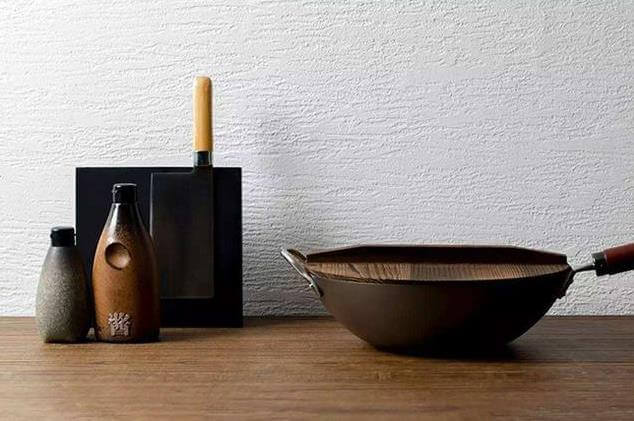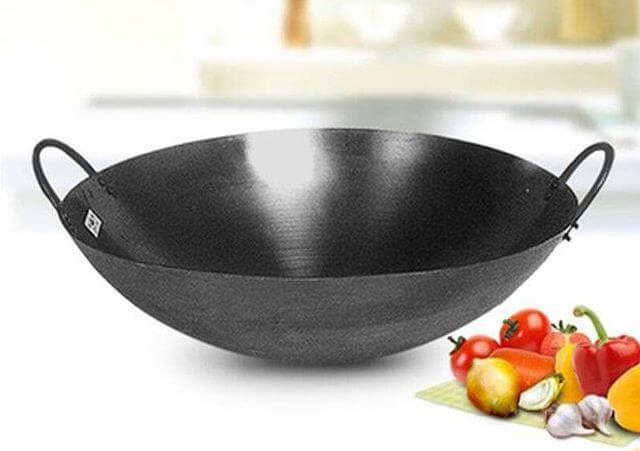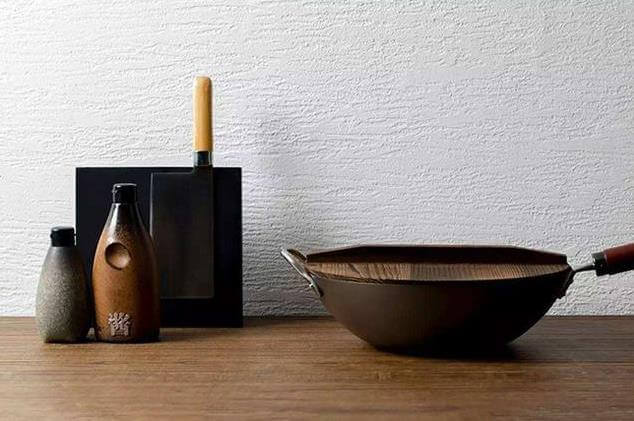Many people prefer to cook in an iron pan, as they believe it is a healthy option and can supplement their iron intake. Although it is not confirmed whether cooking in an iron pan actually supplements iron, the benefits of using an iron pan are numerous, which is why it has a good reputation.
Today we are not discussing the advantages of using an iron pan. Instead, we will focus on the differences between pig iron pans and wrought iron pans. What is the best option?
Iron can be classified into two types: pig iron and wrought iron. The carbon content in wrought iron decreases through various heating processes, resulting in increased hardness.
The difference between pig iron and wrought iron is in the carbon content. Pig iron generally contains a greater amount of carbon, ranging from 2% to 4.3%, while wrought iron has a lower carbon content.
Pig iron is often called cast iron and typically contains other elements such as silicon, manganese, sulfur and phosphorus. It can be cast, but not forged.
Pig iron can be divided into different types based on its carbon content, including steelmaking pig iron, cast pig iron, nodular cast iron and alloy pig iron. Alloy pig iron contains elements such as silicon, manganese, nickel or other elements and is commonly used as a raw material in steelmaking.
The addition of pig iron alloy during steelmaking can improve the properties of steel.
Steel pig iron
The carbon from pig iron used in steelmaking exists primarily in the form of iron carbide, resulting in a white section known as white iron.
This type of pig iron is typically hard and brittle and is therefore commonly used as a raw material in steelmaking processes.
Cast cast iron
Cast pig iron has excellent cutting, wear resistance and casting properties, thanks to the presence of soft graphite and lubrication.
However, its positional strength is inadequate, which makes it unsuitable for forging and rolling. Hence, it is mainly used for the production of various types of castings.
Nodular cast iron
Nodular cast iron contains carbon in the form of spherical graphite, which gives it exceptional casting, cutting, elasticity and wear resistance properties. This material is widely used in the production of high-quality castings, including crankshafts, gears, pistons and various mechanical components.

Is it better to use pig iron or wrought iron for a frying pan?
Advantages and disadvantages of pig iron pan and wrought iron pan
Iron pans are typically made from pig iron and do not contain any other chemicals. They are currently considered the safest kitchen utensils available.
During cooking, the iron pan does not dissolve or release particles, and any iron that may be released is beneficial to the body's absorption.
Iron cookware is mainly classified into two categories based on the material used: refined iron cookware and cast iron cookware. Cast iron pans are commonly called pig iron pans.
Furthermore, based on the type of lid used, iron pans can be classified into uncovered iron pans, glass pans and stainless steel pans.
Advantages of pig iron pan:
Heat transfer is consistent. When the fire temperature reaches 200℃, the pig iron pan will regulate the temperature imparted to the food at 230℃ by emitting a specific amount of thermal energy.
Disadvantages:
Slow heat transfer, thick ring, rough grain and easy to break
Advantages of refined iron pan:
It is made of refined iron, with less impurities, fine pot ring, high pot temperature, fast heat transfer, easy cleaning and exquisite appearance.
Disadvantages:
Pass the heat temperature directly to the food.

From the details of life, which is better, pig iron pan or wrought iron pan?
1. Consider from the point of view of saving dyes and electricity, such as diesel and gas .
Wrought iron has excellent ductility and high toughness, allowing the forging of relatively thin pans. Additionally, wrought iron pans have rapid heat transfer capabilities, while pig iron pans tend to be relatively fragile. It is important to note that pig iron pans cannot be produced using casting methods. Despite this, pig iron pans do not have faster heat transfer capabilities than wrought iron pans.
So, based on these factors, it can be concluded that wrought iron cookware is superior to pig iron cookware.
2. From the point of view of daily cleaning
A raw iron pan is a little easier to maintain compared to a wrought iron pan. If used frequently, a pig iron pan will not rust easily, as long as the detergent is not used excessively, the oil film on the surface is thoroughly washed, and cleaned immediately after cooking.
On the other hand, a wrought iron pan needs to be washed and dried after use or coated with a film of oil; otherwise it is prone to rust.
3. An iron pan used for frying food
The rate of heat transfer in a pig iron pan is typically slower than that of a wrought iron pan, but the rate of heat dissipation is greater. This means that when frying food, a cast iron skillet is less likely to cause food to stick than a wrought iron skillet, and the oil temperature is less likely to get too high.
If the oil temperature is too high, food may become overcooked and burnt. Therefore, a pig iron skillet may be the best choice for frying food as it can help prevent food from sticking and allow for better control of the oil temperature.
4. Consideration on preventing rust in iron cookware
The surface of a cast iron pan is not very smooth and may contain small cracks. However, when food is fried for a long time, a layer of carbide and oil film may form on the surface, which helps regulate the oil temperature and prevent rust.
On the other hand, the surface of a wrought iron pan is usually smoother. It is generally more difficult for scale to form on the surface unless the food is fried for a long period of time.
5. Big kitchen, big boil and other non-family daily cooking
The surface of a pig iron pan is not very smooth and may contain small cracks. However, when food is fried for a long time, a layer of carbide and oil film may form on the surface, which helps regulate the oil temperature and prevent rust.
On the other hand, the surface of a wrought iron pan is usually smoother. It is generally more difficult for scale to form on the surface unless the food is fried for a long period of time.
Tips for choosing and using an iron pan
1. Check that the surface of the pan is smooth
Make sure the surface of the pot is smooth, but remember that it may not be as smooth as a mirror due to the casting process. Iron pans have irregular shallow lines due to this process.
Iron pans with defects and small bulges generally do not have a significant impact on quality, but small holes can have a severe impact on the quality of the pan. Therefore, it is essential to pay attention to these factors when purchasing an iron pan.
2. Check the thickness and uniformity of the pot
A pot with uneven thickness is not considered good. When purchasing a pan, you can turn the bottom of the pan upside down, hold the concave center of the pan with your fingers, and hit it with a hard object. The louder the sound of the pan and the greater the hand vibration, the better the quality of the pan.
Furthermore, a pan with rust stains does not necessarily indicate poor quality. Rust stains on a pan may indicate long-term storage, making the internal structure of the pan more stable. As a result, it may not break easily when used for the first time.
3. Identify the manufacturer’s brand and reputation
The use of iron pans from reputable brand manufacturers is guaranteed.
Friends who have been housewives for a long time have experience in purchasing cookware and kitchen utensils. If they buy iron pans from physical stores, they can choose the appropriate ones based on their purchasing skills.
However, for those who prefer to shop online, it is essential to select iron pans from reputable brands, as it is not possible to personally verify the advantages and disadvantages of the pans.
The choice between a pig iron pan or an iron pan depends on individual needs. There is no perfect vase. Only the pot that perfectly adapts to specific needs can be chosen.

























































